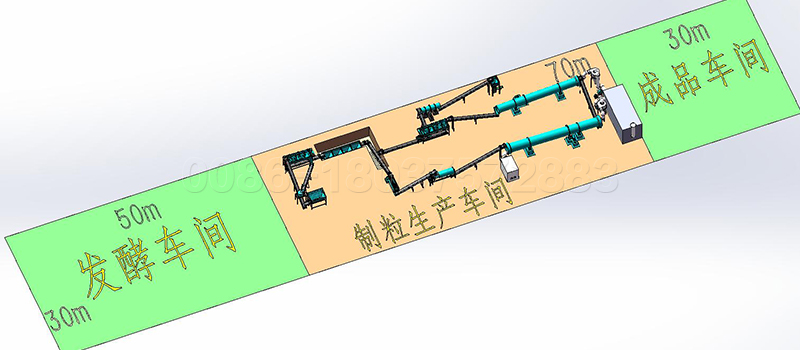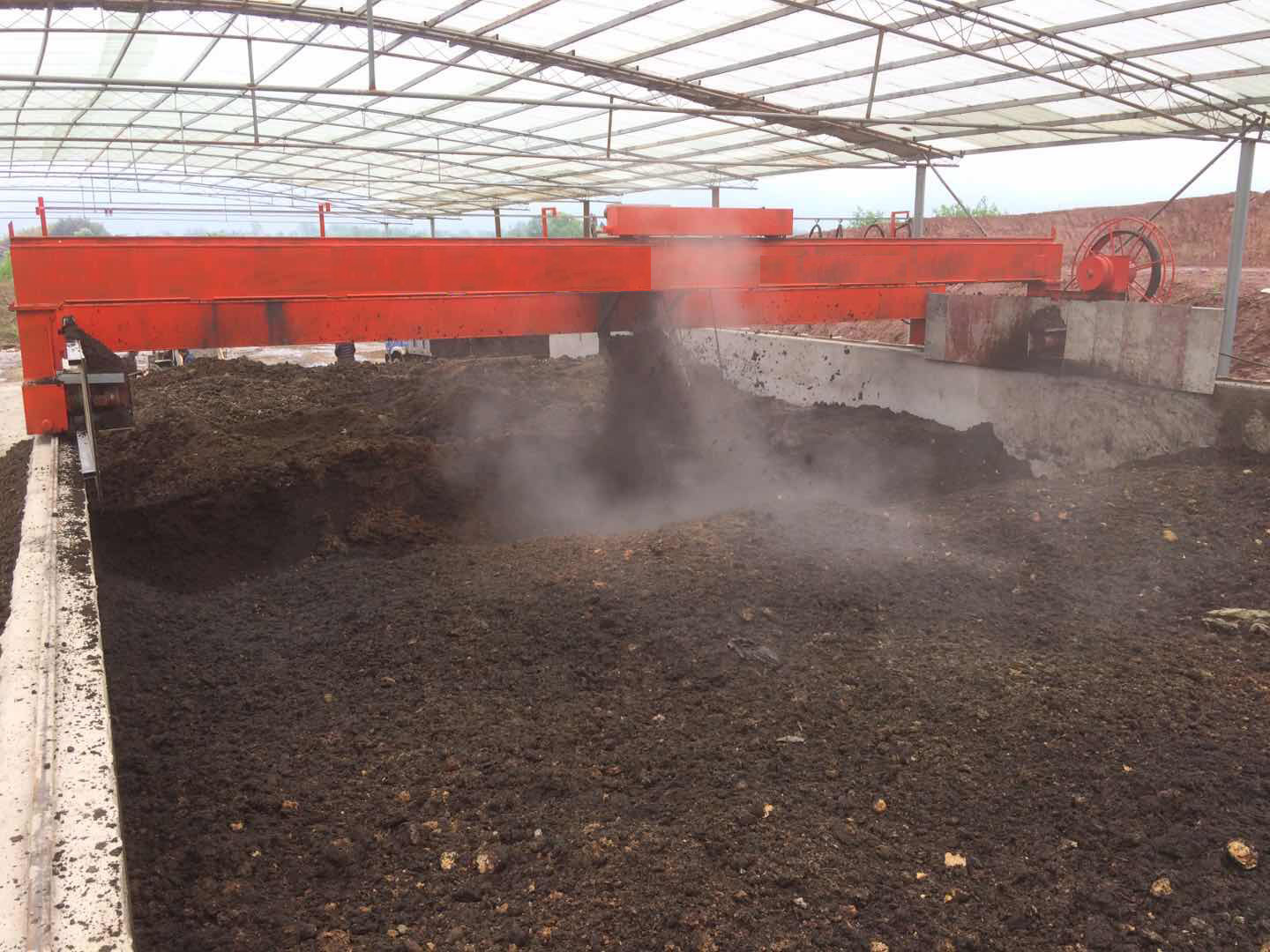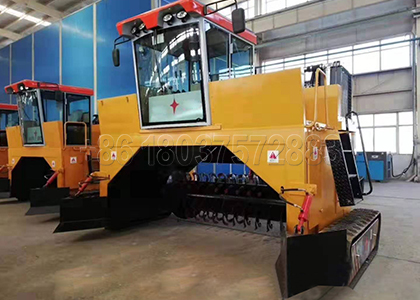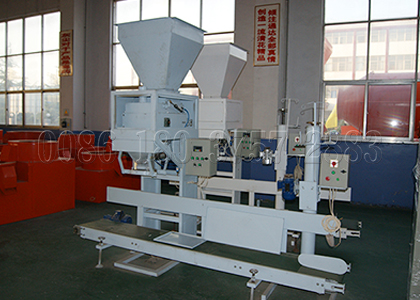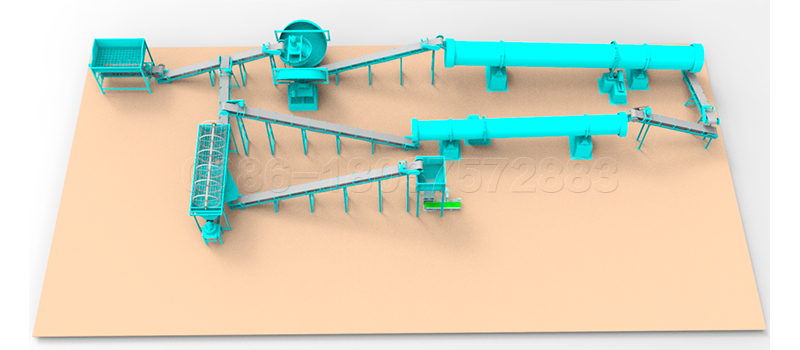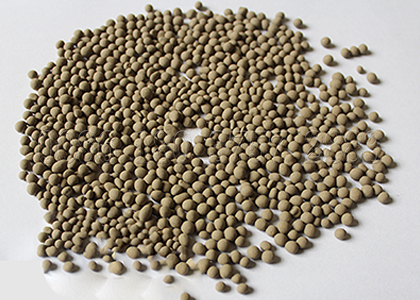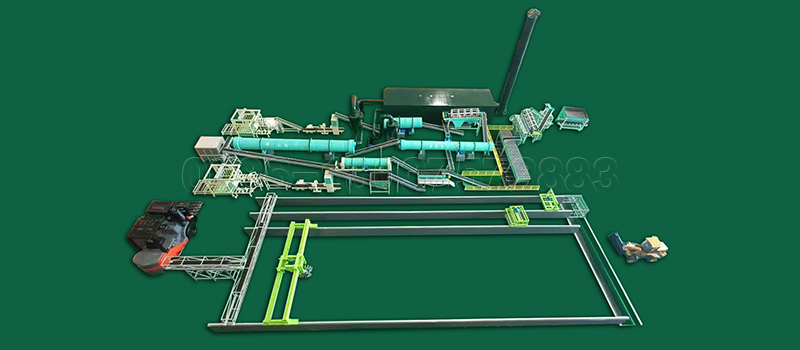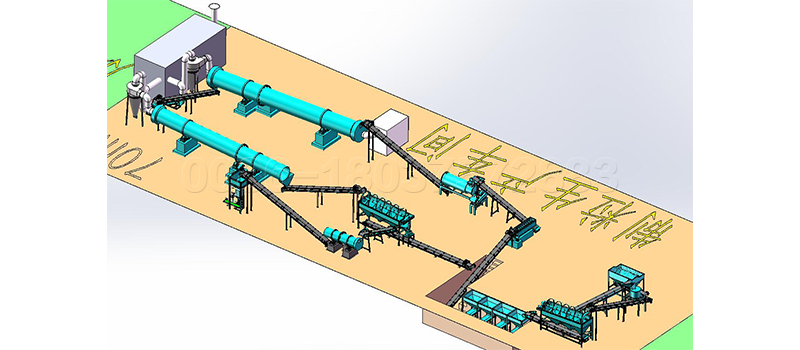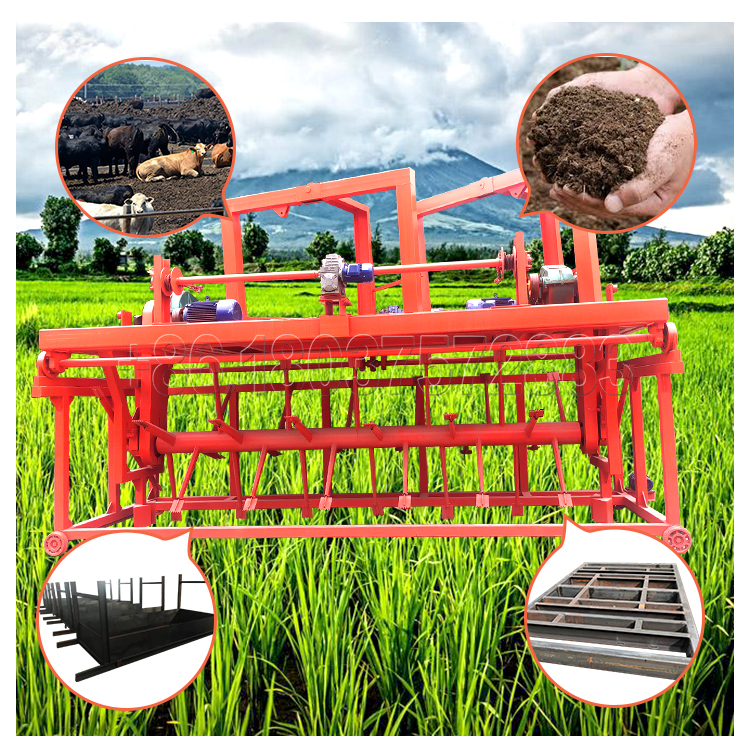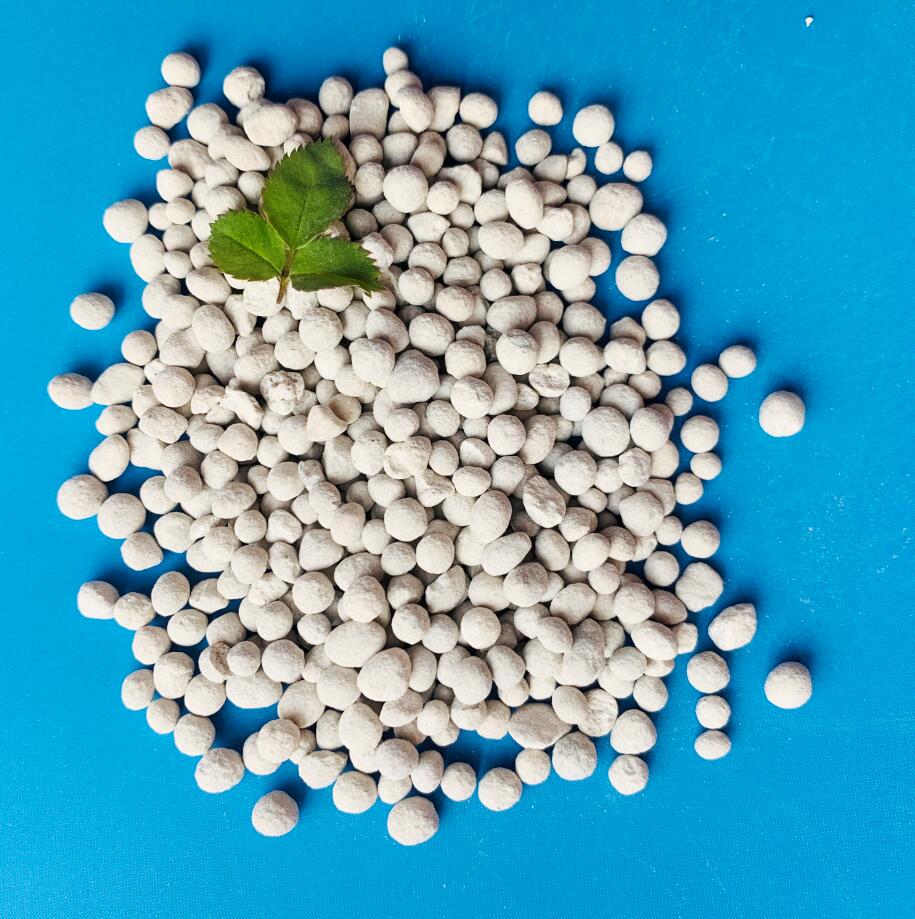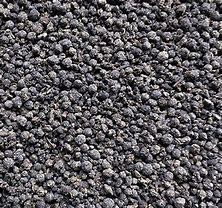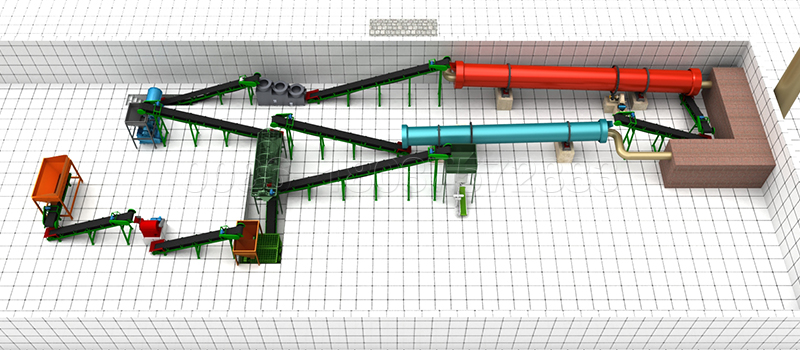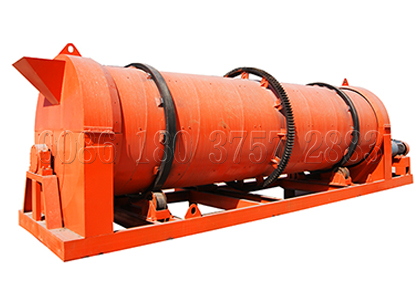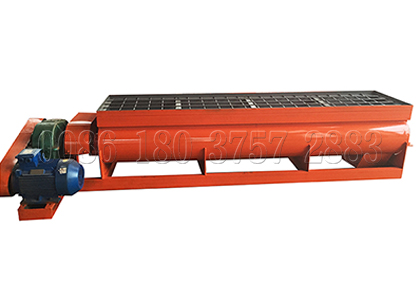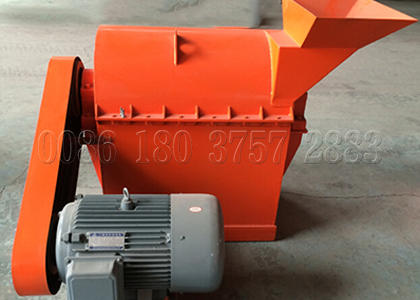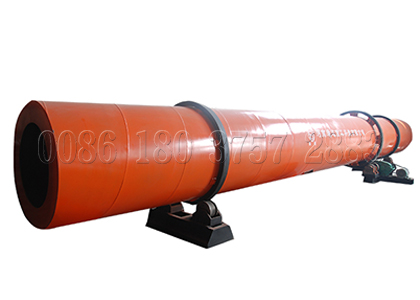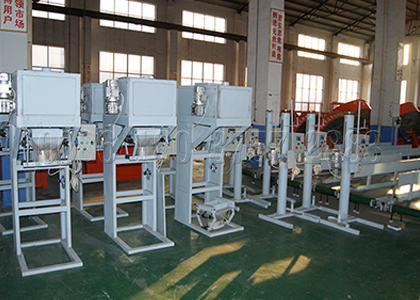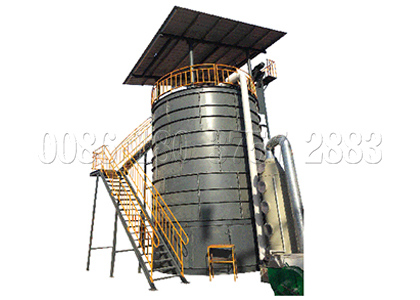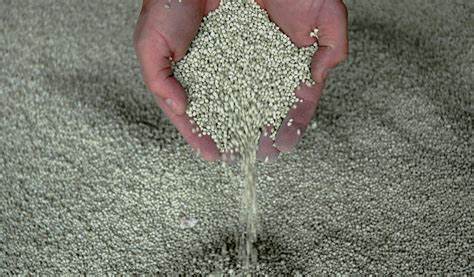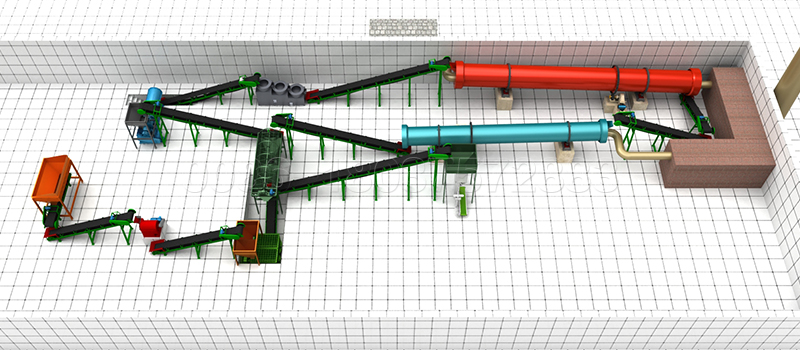The technical content of biological fertilizer project is high. In addition to the biological agents that promote the maturation and decomposition of organic matter in the maturation process, in order to achieve targeted maturation and deodorization, microbial products with specific functions need to be added to enhance the effect of the products.
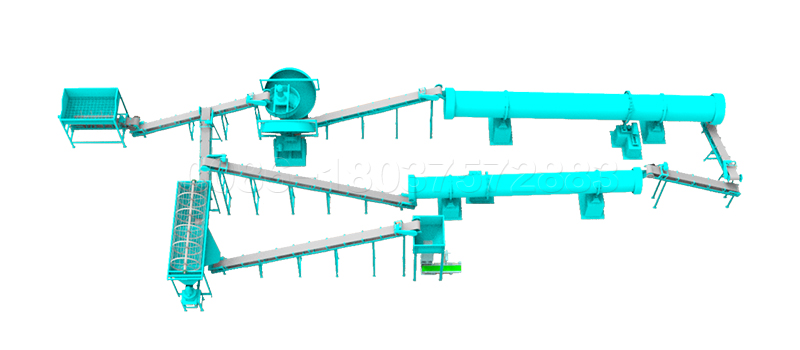
At present, bio organic fertilizer is included in the category of microbial fertilizer in China, and more strict management measures are implemented than organic fertilizer to promote the healthy development of organic fertilizer.
1. The production process of bio organic fertilizer production enterprises registered with the Ministry of agriculture is basically engaged in the production of microbial fertilizer. In the process of fermentation production, tank stacked fermentation is mostly used, and there are other fermentation methods, such as flat stacked fermentation and fermentor fermentation.
In the process of fermentation and maturation, the adjustment of material moisture, carbon nitrogen ratio and temperature and the use of curing agent are the production process. The key is that the application of fungicide directly affects the fermentation cycle and the maturity of materials. The ripening material basically achieves the harmlessness of the product and is also conducive to the survival of the functional bacteria added in the post-treatment process.
2. In terms of post-treatment of fermentation materials, most enterprises add functional bacteria for compound molding. The dosage form of the product is mainly powder, and some are granulated by rotary drum fertilizer granulator or roller granulator. Granular products prevail over powdered products. The disadvantages of poor appearance and low grade not only improve the commerciality of the product, but also increase the production cost of the enterprise, which has a certain impact on the survival of effective bacteria.
3. The utilization of strains and microbial strains is the core of bio organic fertilizer products. In the production process, there are generally two links related to the utilization of microorganisms:
First, add decomposition bactericide to promote material decomposition and decompose and deodorize in the decomposition process. It is mainly composed of complex strains.
Common strains include photosynthetic bacteria, lactic acid bacteria, yeasts, actinomycetes, Penicillium, wood fungi, etc; Second, the functional bacteria added after material decomposition, generally nitrogen fixing bacteria, phosphorus solubilizing bacteria, silicate bacteria, lactic acid bacteria, Pseudomonas, actinomycetes, etc., play a specific role as fertilizer in the product.
Therefore, the selection and use of microbial strains for the production of bio organic fertilizer is a core technology. Only by mastering this key technology can we accelerate the decomposition and maturity of materials, Ensure the application effect of the product.
More detailed info, go to https://organicfertilizerplants.com/bio-organic-fertilizer-production/


